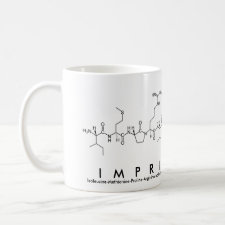
Authors: Kudupoje MB
Article Title: 1356 Effect of imprinted polymer based ergot-alkaloid adsorbent on in vitro ruminal fermentation.
Publication date: 2016
Journal: Journal of Animal Science
Volume: 94
Issue: (Supplement 5)
Page numbers: 655.
DOI: 10.2527/jam2016-1356
Abstract: Previously, we have described the development and characterization of a synthetic polymer designed as an ergot-alkaloid adsorbent. Here, effects of ergotamine imprinted (MIP) and non-imprinted (NIP) methacrylate based polymer adsorbents on in vitro ruminal fermentation were evaluated in an experiment with a completely randomized design. Each adsorbent was evaluated at four different inclusion levels (0.3, 3, 30, 300 mg/0.5 g DM) and compared with a control which contained no adsorbent. Ruminal fluid for inoculum was pooled from 4 steers grazing endophyte-free fescue. Triplicate vessels were inoculated for each treatment in the 2 x 4 + 1 treatment structure. In each vessel, strained ruminal fluid (20 mL) was diluted with buffer (80 mL) under anaerobic conditions and incubated for 30 h at 39°C with 500mg (DM) alfalfa hay substrate. Gas pressure was monitored using an ANKOM RF gas production system at 1 min intervals. Fluid samples were collected following termination of fermentation at 30 h for ammonia-N, VFA and pH measurement. The cumulative gas production and production rate were determined using a Fitzhugh model [y = (1 ± e-rt)n] fit using nonlinear least squares methods. Statistical analysis was conducted using the GLM procedure of SAS, with model terms for polymer type, inclusion amount, and their interaction and orthogonal polynomial contrasts were used to evaluate effects of polymer inclusion level. There were no interactions (P > 0.10) between polymer type and inclusion level and no differences (P > 0.10) between polymer types. Although there was a quadratic effect (P < 0.05) on gas production rate with increasing polymer inclusion level, total gas production (plateau) was unaffected (P > 0.10) by inclusion level. Polymers did not affect (P > 0.10) total or individual VFAs or ammonia-N concentrations at any inclusion level. The pH declined linearly (P < 0.01) with increasing amount of polymer. However, given the logarithmic increase in polymer dose level, the influence on pH was minor ( < 0.07 pH units) for all except the 300 mg inclusion level, which depressed pH an average of 0.24 units relative to control. Supplementation of methacrylate based polymer at inclusion rates from 0.3 to 300 mg/500 mg DM did not affect VFA profiles, total VFA concentrations, ammonia-N, or total gas production in rumen fluid containing alfalfa hay substrate. High inclusion levels of both imprinted and non-imprinted polymers lowered pH. However, the inclusion level at which this effect was observed far exceeds levels that would be used in practical supplementation strategies.
Template and target information: ergotamine



Join the Society for Molecular Imprinting

New items RSS feed
Sign-up for e-mail updates:
Choose between receiving an occasional newsletter or more frequent e-mail alerts.
Click here to go to the sign-up page.
Is your name elemental or peptidic? Enter your name and find out by clicking either of the buttons below!
Other products you may like:
 MIPdatabase
MIPdatabase









